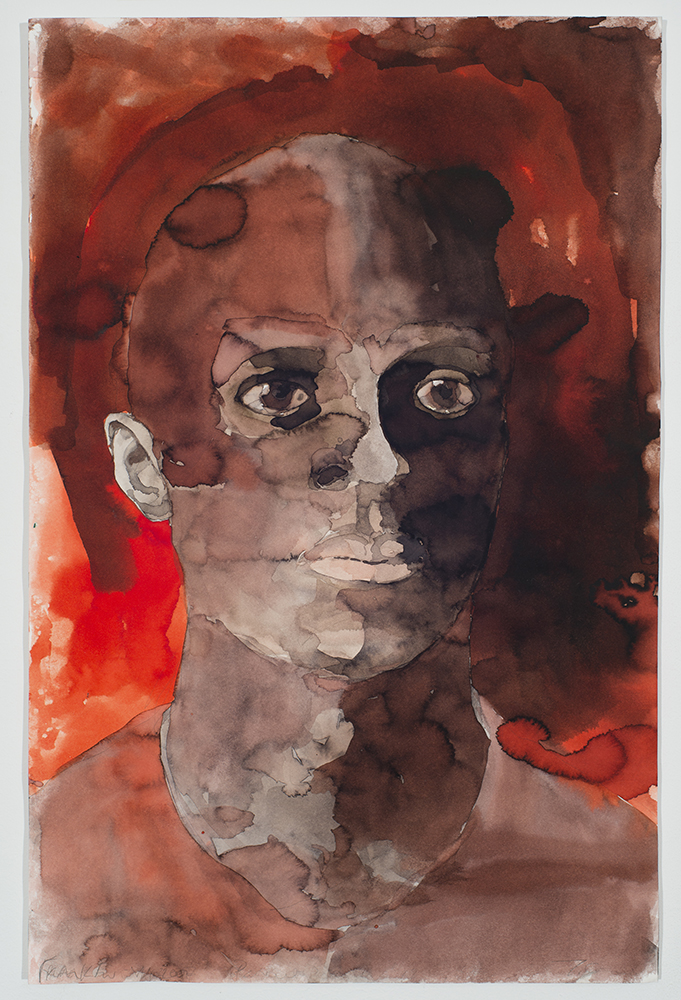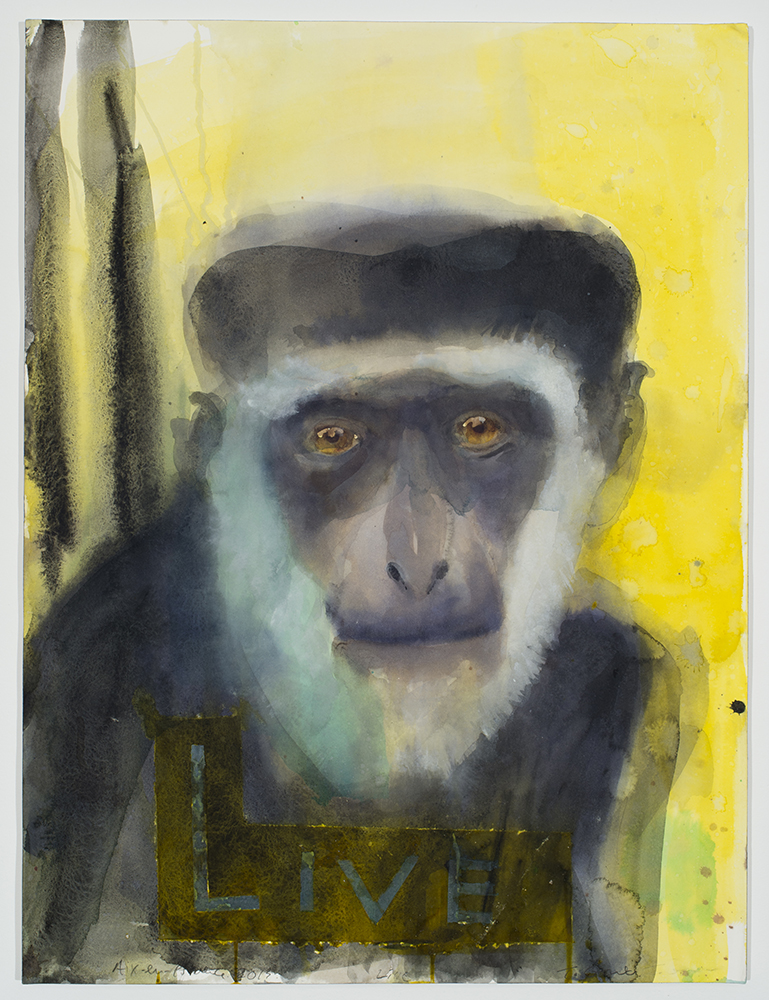Galerie Hugues Charbonneau is very pleased to present the first retrospective of the significant corpus of watercolours from South African born artist Trevor Gould. The exhibition features a selection of works executed between 1996 and 2013 that highlight the inextricable links between this medium and Gould’s other projects in sculpture, installation, video or performance.

Sugar Plantation, South Africa, Leaf thief series, 1997
aquarelle sur papier
watercolour on paper
38 x 28 cm (15” x 11”)

Steamy Jungle Scene, Leaf thief series, 1998
aquarelle sur papier
watercolour on paper
38 x 28 cm (15” x 11”)
His work explores the underlying presumptions and automatist mechanisms inherent in the nature/culture dualism that frames so much our understanding of ‘otherness.’ Gould resituates the colonial/postcolonial narrative between Africa and the West by offering an alternative storyline that subverts the authority of this “official history.” In the series Leaf Thief (1996-1998), he specifically focuses on botanical imperialism and representations of the explorer-coloniser.

Benga, detail from Cartoon for a Wall Drawing, 2007
aquarelle sur papier
watercolour on paper
46 x 30 cm (18” x 12”)

Untitled, 2008
aquarelle sur papier
watercolour on paper
28 x 36 cm (11” x 14”)
Gould problematizes the performativity of this ideology of domination still in motion today at the level of the institution, and other artistic, scientific and historical platforms, such as museums, zoos, botanical gardens and encyclopaedias. He sheds light on these power structures in his vast series Universal Fairs (1996-2006) that takes an incisive look into the phenomenon of world fairs.

Berlin, 2003
aquarelle sur papier
watercolour on paper
23 x 30 cm (9” x 12”)

Installation pour l’Orangerie, Jardin de plantes, Cane, Voir c’est croire !, 2000
aquarelle sur papier
watercolour on paper
28 x 36 cm (11” x 14”)
This ‘other’ History, which Gould reveals to us through the intervention of archive documents and representations of fictional events, invites a critical and political rereading of an established historical Narrative. The protagonists of this iconography, such as the giraffes and monkeys for instance, are for the artist symbols of Africanism and are loaded with questions about identity, its uprooting, and cultural contamination. In his most recent series, Something of an Idea (2006-), the allegory of the ape gets (sub)merged into representations of ‘humanness’ to embody the philosophical tension that structures our precarious ideas about our knowledge and our image.

Untitled, Notes after Jean de La Hire series, 2004
aquarelle sur papier
watercolour on paper
51 x 36 cm (20” x 14”)
The marriage of Gould’s use of watercolours with the historical and cultural interrogations that shape his work are strengthened by the fact that Africa has inherited the techniques of this medium after encountering its use by soldiers and British explorers during the colonial era.

Untitled, Live in a Box series, 2013
aquarelle et encre sur papier
watercolour and ink on paper
61 x 46 cm (24” x 18”)

Untitled, Live in a Box series, 2013
aquarelle et encre sur papier
watercolour and ink on paper
61 x 46 cm (24” x 18”)





